
Hnefatafl, the Viking Game, was popular in Europe before chess came along (around 1100 AD). There are many variants. We describe the rules of the best known variant here, the norse variant with an 11 by 11 board and no dice. The game itself is simpler that chess in its rules, but strategically at least as difficult.
|
||||||||||||||||||||||||||||||||||||||
 |
 |
|
Before black's first move
|
After black's first move
|
 Piece capturing
Piece capturingMore than one piece can be captured at the same time.
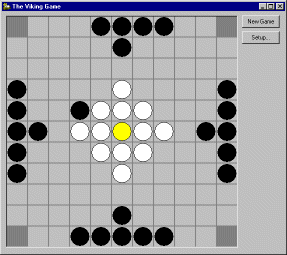 |
 |
|
Before white captures black piece
|
After white captures black piece
|
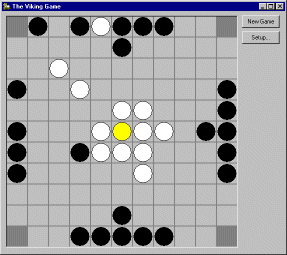 |
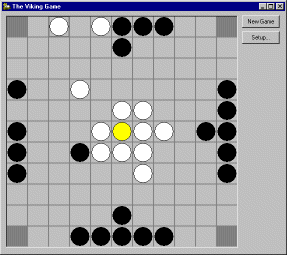 |
|
Before white captures two black pieces
|
After white has captured two black pieces
(one by sandwiching between two white pieces, one by sandwiching
between a white piece and a corner square)
|
 |
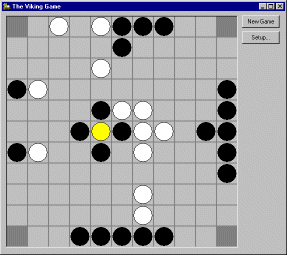 |
|
Before black captures the king by sandwiching
him along both axes with black pieces.
|
After black captures the king.
|
When the
king is next to the border, only one black piece on the other
side is needed to sandwich him on that axis. Furthermore, the
king can be sandwiched between a black piece and a corner square.
 |
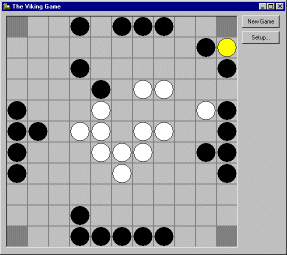 |
|
Before black captures the king by sandwiching
him between a black piece and the throne on one axis,
and between the border and a black piece on the other
axis.
|
After black captures the king.
|
 |
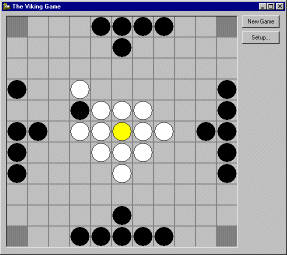 |
|
Before black moves in between white pieces.
|
After black moves in between white pieces,
black is not captured.
|
 Goal
GoalIf white moves so that his king has a clear escape route to one of the corner squares, he must announce "Raichi". If he has two escape routes open, he must announce "Tuichi".
These announcements are not necessary if black opens these routes inadvertently himself.
White also wins if there is only one black piece left.
 |
 |
|
Before the king escapes ("raichi")
|
After the king escapes: white wins the
game.
|
 |
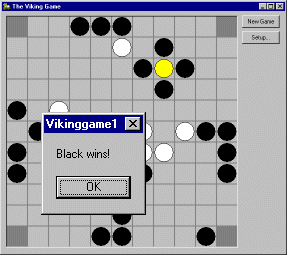 |
|
Before black wins by sandwiching the
white king.
|
After black wins.
|